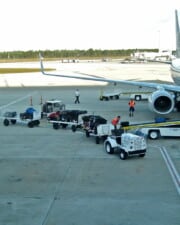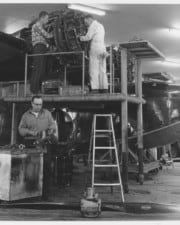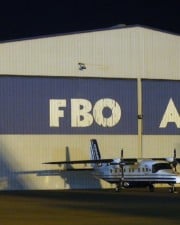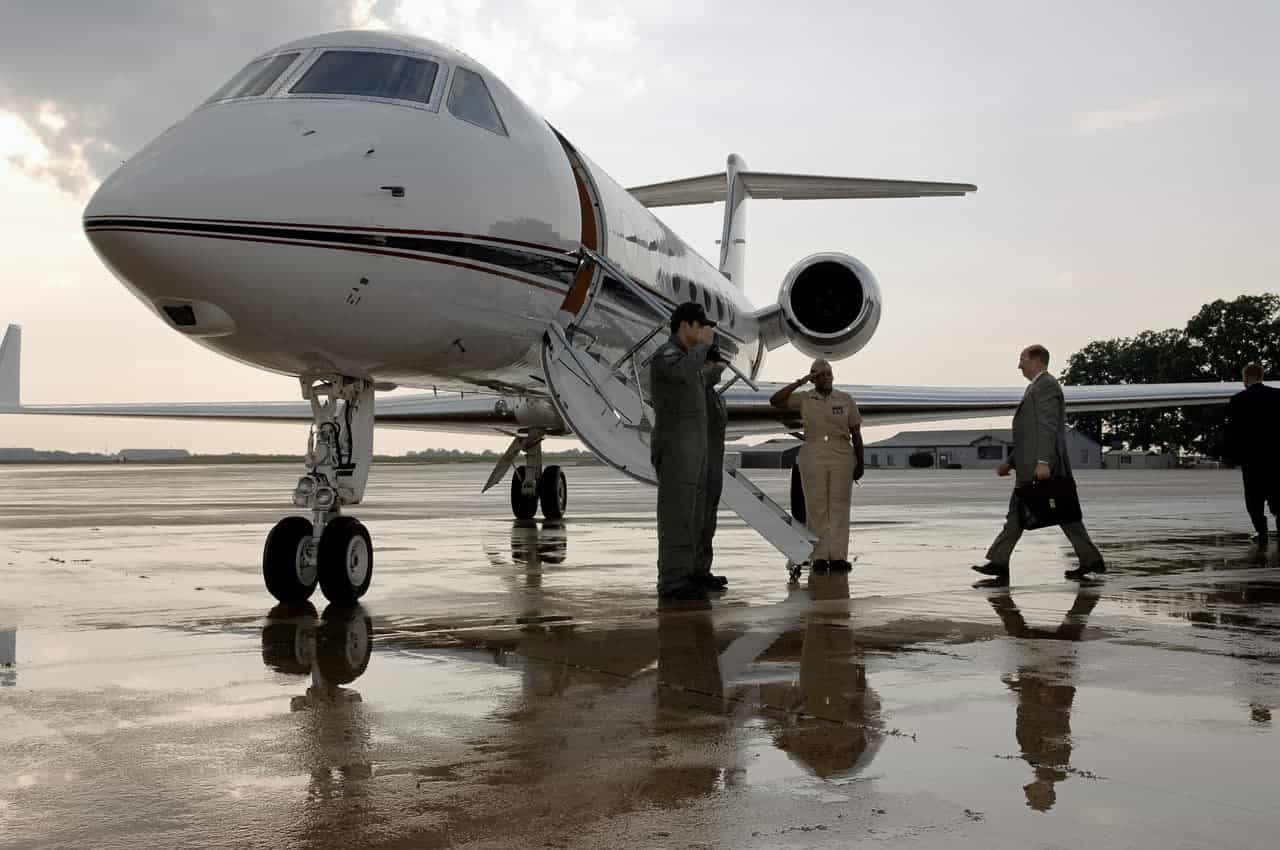Airports contain a variety of equipment to accommodate airplanes, crews, and passengers. One of the largest pieces of equipment is the jet bridge. Based on the name, some people may assume the bridge connects jets. However, the real use is much simpler.
TLDR – A jet bridge is an enclosed, movable structure used at airports to connect a terminal gate to an airplane. Officially called a passenger boarding bridge (PBB), the bridge provides a convenient way for passengers and crew to easily embark and disembark from the plane.
How Does a Jet Bridge Work?
A jet bridge resembles a large tunnel with wheels. One end of the bridge connects to the terminal while the other end extends to the airplane door.
The end connected to the terminal is called the “pivot” or the “rotunda.” It is typically fixed to a gate in the terminal wall. The other end is called the “cabin” and is supported by wheels.
A small control station is in the cab, allowing a crew member to maneuver the bridge. Older systems contained many individual motor control buttons while modern systems have simplified control panels with an LED screen and a multi-axis joystick.
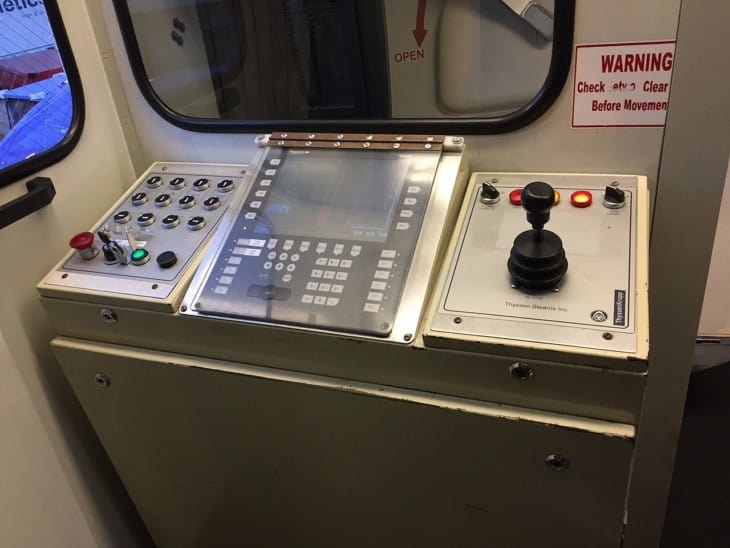
As the height of the aircraft door varies based on the design of the plane, the operator may need to adjust the height of the loading bridge. Due to varying heights, the inside of the bridge often has a slight incline or decline.
Along with raising or lowering the cabin, an operator can swing the cabin to the left or right and retract or extend it. Before the airplane departs, the bridge is retracted or moved to provide clearance for the taxiing aircraft. If the bridge is not moved, it may contact portions of the aircraft, such as the wings.
Some airlines use split bridges, which include a single rotunda, two walkways, and two cabins. This allows airlines to connect two planes to one terminal gate.
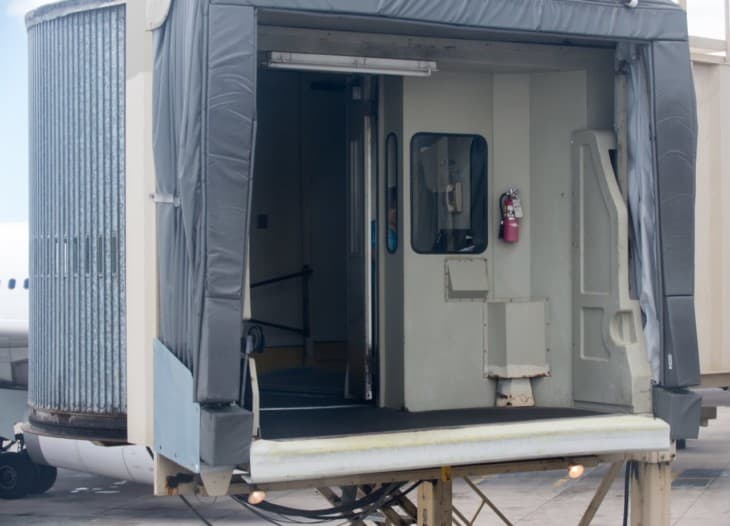
Why Do Airlines Use Jet Bridges?
Jet bridges were created to provide passengers with an easier way to reach and depart the airplane. Without an enclosed bridge, passengers are exposed to the elements, such as cold weather, rain, and snow.
Before the introduction of enclosed bridges, passengers would exit the airport or terminal and walk across the apron, which is the area where airplanes park. Passengers would then climb a set of movable stairs to reach the airplane.
Adding an enclosed bridge from the terminal gate to the airplane provides a more efficient route. Passengers do not need to step outdoors, as they can reach the bridge directly from the airline terminal.
The use of enclosed bridges also keeps passengers off the apron and out of the way of ground operations, such as refueling and loading/unloading cargo.
Jet bridges are more secure compared to ramps and stairs. Without a bridge, individuals on the apron may gain access to a plane. The bridge creates a secure connection between the terminal and the plane.
When Did Airlines Start Using Passenger Bridges?
Jet bridges, or passenger bridges, were first used in the late 1950s and early 1960s. Airlines wanted a better way to shield passengers from the elements and increase the efficiency of the embarking and disembarking procedures.
Before jet bridges, airlines used several methods for boarding passengers, including movable walkways and telescopic canopies. Movable walkways were used at Croydon Airport in London as early as 1931. However, the walkways were not covered and did not extend entirely to the terminal.
Telescopic canopies were introduced in the mid-1930s. Several airports in the UK and the US installed metal canopies with a telescoping design. The canopies were placed on steel rails that allowed the grounds crew to extend or detract the canopy.
While telescopic canopies shielded passengers from the elements, they were costly and cumbersome. The steel rails blocked portions of the apron and limited the flow of traffic from the grounds crew.
In the early 1950s, airlines tested the use of covered walkways. The walkways had a fixed design and were connected directly to the terminals. Dollies on sunken tracks would guide the airplanes into position at the other end of the walkway.
American Airlines was one of the first airlines to introduce a movable, enclosed bridge that connected the terminal with the airplane. The bridge was installed at the San Francisco International Airport. By the 1970s, almost every major airport in the United States had passenger bridges.
While jet bridges are common, they are not found at every terminal. Some airlines have a limited number of terminal gates, requiring them to park two or more jets at a time. Instead of using a bridge, they have passengers embark/disembark on the ramp or apron.
Passenger bridges are also less common at small, single-story airports. When used at a single-story airport, the rotunda is fixed near the terminal outside of the airport. Passengers reach the enclosed bridge using a ramp, stairs, or a lift.
Why Do Planes Board on the Left?
Airplanes feature a door on the left side of the cabin for several reasons. First, the pilot is typically seated on the left side of the plane. Placing the door on the left side allows the pilot to accurately align the plane with the terminal.
Planes are also fueled on the right side. The grounds crew operates a refueling vehicle and secures a bonding cable and refueling hose to the plane. Having the passengers embark and disembark on the left side keeps the refueling process out of the way.
The door was initially placed on the left side based on the design of sea vessels. Before rudders and motors, ships had a steering oar.
As most sailors were right-handed, the oar was placed on the right side of the ship. Due to the size of the oar, passengers had to embark/disembark on the left side.
The steering side of the ship eventually became called the “starboard” side by combining the Old English words for steer (steor) and the side of a boat (bord). The side that faced the port became the “port” side.
When designing early airplanes, engineers continued the tradition of using the “port” side for loading and unloading passengers, crew, and cargo.
Who Operates the Jet Bridge?
A member of the airport grounds crew typically operates the jet bridge. The “bridge driver” is responsible for docking the cabin of the bridge with the airplane using a joystick and computer screen.
Most of the ground crew are employed by the airport or through an agency contracted out by the airport. It is becoming less common for airlines to directly hire ground crew members, such as those responsible for fueling aircraft, handling baggage, and operating the bridge.
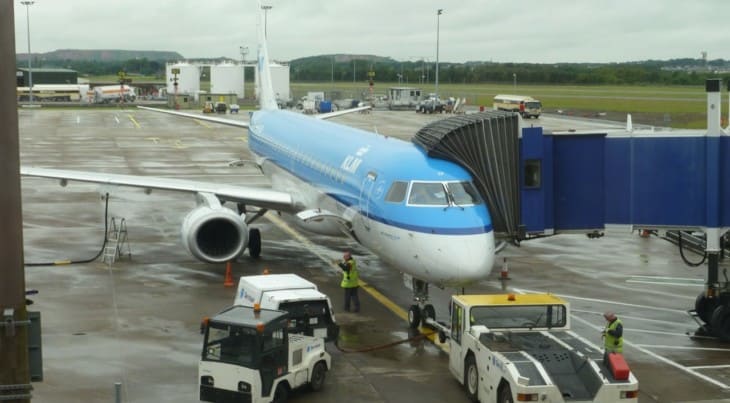
Are There Different Types of Passenger Bridges?
There are several types of bridges. The most common is the mobile telescopic bridge (MTB). The MTB connects to the terminal and is guided to the door of the airplane.
Some airports use split bridges or dual bridges to connect one terminal to two airplanes. The bridges may also connect to the front and rear doors of a single plane.
In areas with extreme environmental conditions, such as heavy snow and cold weather, an airline may use a nose-loader bridge. The nose-loader bridge offers a much larger cabin and more of a seal between the walkway and the door.
Related Posts



